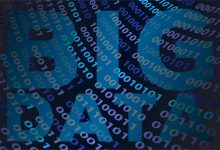Between 2015 and 2017, consumers and enterprises have created more data than the sum of all data created prior to that time, and technology experts forecast the sum of all data will expand from 130 to 40,000 exabytes in the decade and a half preceding the year 2020. By then, researchers estimate that society will produce 1.7 megabytes of data daily for each individual on the planet, expanding today’s digital universe tenfold – from 4.4 to 44 zettabytes. As you can imagine, big data and education have a thing or two to gain from one another. Organizations use big data systems to collect, store and analyze large amounts of information and gain invaluable insights into their daily operations. The innovation is changing how enterprises leverage information, improving industries and transforming education. Big data systems are helping people to learn and improving how organizations analyze and interpret information and use those interpretations to make better decisions. This makes the role of specialists who can organize, understand and analyze data more vital than ever. In the academic setting, futurist envision classrooms fitted with continuous video feeds that capture intricate details of learners, such as facial expressions, discrete physical movements and social interactions. This construct could capture every item that students interact with and every statement made by learners and educators. Additionally, the evaluative system could incorporate biometric signals recorded by wearable devices allowing researchers to discover what drives learning and positively motivates students. Big data technology holds amazing potential for the future of teaching and learning. The following sections explore 3 ways that big data technology is changing today’s learning environment.
Customized Curricula for Improved Learning Outcomes
Big data technology is supporting the emergence of new educational models, such as digital learning and customized curricula. Most modern consumers are extremely reliant on technology. Today’s smartphones, cars and appliances aid consumers in navigating the world and managing the basic necessities of living. Some devices entertain, others provide important life-enhancing functions and some innovations improve the quality of education. In the digital classroom, educators use big data technology to collect information about students and develop customized learning plans. This serves as an especially beneficial resource for educators charged with steering the learning paths of classes that are growing in size. Traditional classroom curricula consist of static learning plans that are applied consistently for all learners, regardless of their academic performance. Using innovative big data systems, however, school districts are implementing blended learning programs that merge the traditional classroom with the online learning. This allows students to achieve targeted learning outcomes, while absorbing lessons at an optimal pace.
Using Big Data to Improve Student Performance
Big data is changing education across the learning continuum, from elementary school to universities. As technology and educational standards evolve, big data systems help teachers to better understand human behavior and form new conclusions. As a result, understanding the latest trends in education and big data analysis are of growing importance for educators. Contemporary educators use big data technology to discover students’ problem areas, rather than relying on standardized tests to reveal issues, and by using adaptive learning technology, students can spend extra time working through challenging subject matter, while continuing to keep pace with the rest of the class. Big data systems help educators to assess students accurately, while continuously monitoring their progress and likelihood of advancement. This is an important resource for ensuring that learners will perform adequately in high school to improve their chances for college and university admissions in the future. To date, school districts that have implemented big data systems to monitor and evaluate student performance have experienced significantly improved outcomes. The technology has also helped educators to develop learning plans that improve student engagement.
The New Path to Learning Possibilities
Traditional learning paths dictate that students should advance based solely on their age. Exceptionally talented students may enter advanced learning tracks, but they remain in the same classes as their less gifted peers because educators typically only collect performance results occasionally. Using big data systems, educators can gauge student performance continuously and advance students accordingly. Big data systems can help students learn on a higher level and improve educational models in the United States. The technology is turning humanity into a society that craves constant analysis and improvement. In the future, the proliferation of big data systems in the classroom will make it increasingly important that educators understand how to work with the technology and use it to improve student learning outcomes. While it may take time, eventually big data technology will become a mainstay on the learning landscape.
The post How Big Data And Education Can Work Together To Help Students Thrive appeared first on SmartData Collective.
